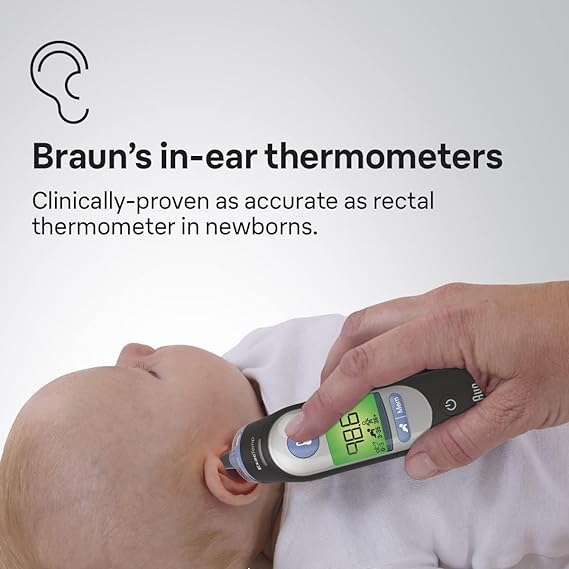The infrared ear thermometer is a versatile, fast, and accurate tool with no age restrictions for users. To measure a baby’s body temperature, simply open the ear thermometer and insert it into the baby’s ear canal. It provides a quick and reliable measurement within seconds, making it suitable for children. However, it is advisable not to use the ear thermometer for babies under 6 months.
The recommendation to use the ear thermometer for babies over 6 months is based on the ear thermometer’s method of measuring the temperature of the cochlea and tympanic membrane. Since babies’ eardrums are still developing and fragile, penetrating the narrow ear canal for measurement may not be convenient. Thus, it is recommended to use the ear thermometer for babies over 6 months.
1. Normal Body Temperature Range for Children’s Ear Thermometer
The ear thermometer measures the temperature of the eardrum, blood supplying the eardrum, and the lower vision. The eardrum temperature accurately reflects human body temperature, with a normal range of 35.8 ℃ to 38 ℃. Age-specific ranges are as follows:
- Children under 2 years old: 36.4°C to 38°C
- Children 3 to 10 years old: 36.1°C to 37.8°C
- Individuals 11 to 65 years old: 35.9 ℃ to 37.5 ℃
- Elderly individuals over 65 years old: 35.8 ℃ to 37.4 ℃
2. Normal Body Temperature Range for Baby Ear Thermometers
For infants under 2 years old, the normal body temperature range is 36.4℃ to 38℃. Infants’ ability to regulate body temperature is weak, making them more susceptible to environmental influences. Even in hot weather or when wearing layers of clothing, a baby’s body temperature should not exceed 37.5 ℃. In colder conditions, the temperature should not drop below 36 ℃.
3. Precautions for Temperature Measurement in Infants and Young Children
Regularly measure temperature, preferably when the baby wakes up, before bathing, or before eating, around three times a day.
Morning temperatures in infants are generally lower than afternoon temperatures. For precise tracking, it is recommended to measure in the afternoon.
If a baby experiences an abnormal rise in body temperature or persistent fever, parents should measure and record the specific time, frequency, and temperature changes. This information aids doctors in diagnosis and treatment.
Avoid using oral surface measurement for young infants and children. While accurate, it may be challenging due to lack of cooperation. Instead, use ear thermometers, forehead thermometers, or repeat measurements if concerned about accuracy.

